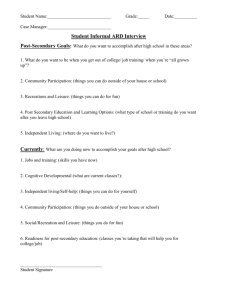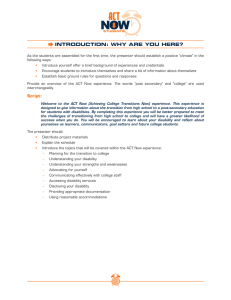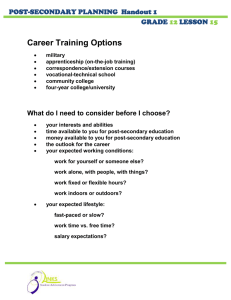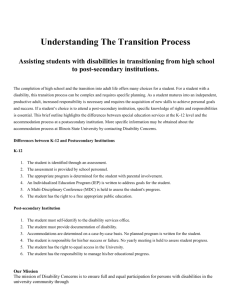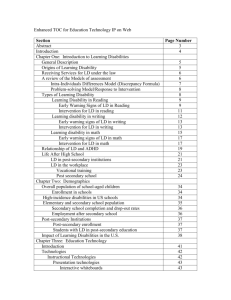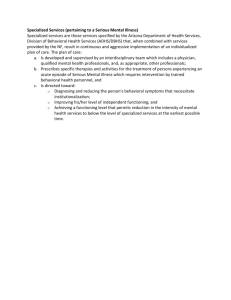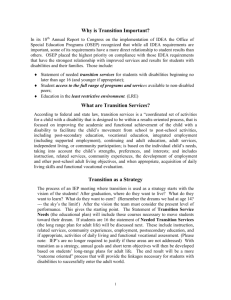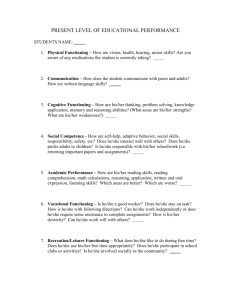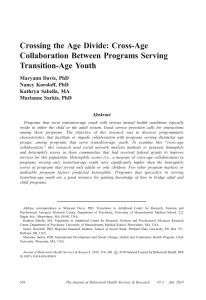2016 Gatlinburg Conference Poster PS-64
advertisement
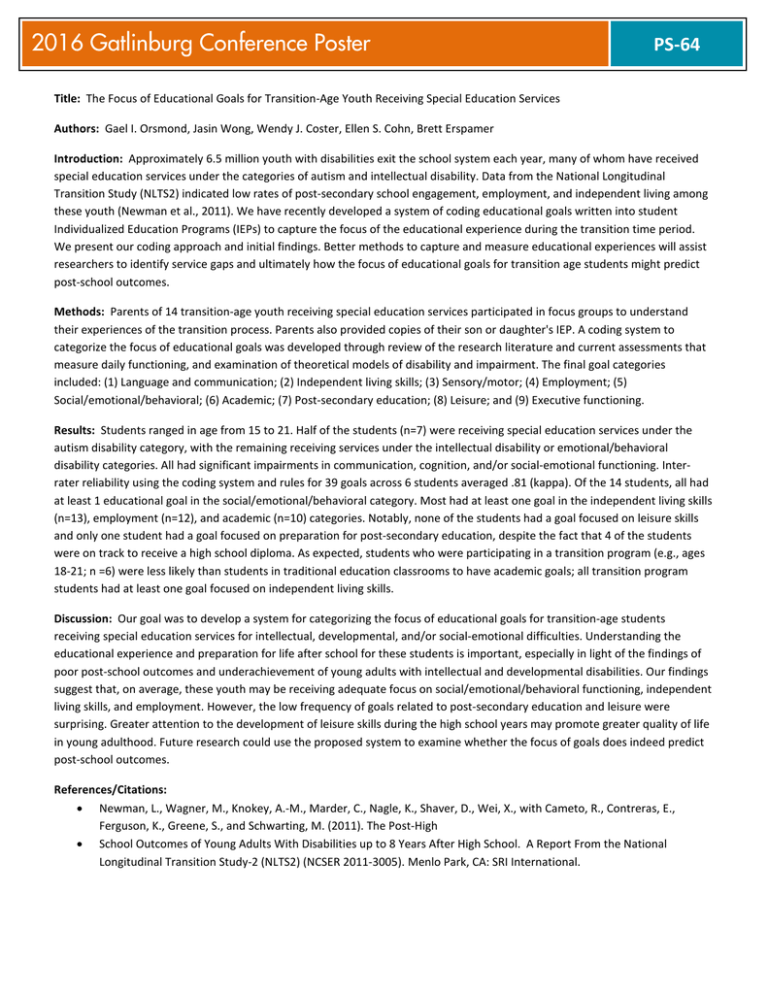
2016 Gatlinburg Conference Poster PS-64 Title: The Focus of Educational Goals for Transition-Age Youth Receiving Special Education Services Authors: Gael I. Orsmond, Jasin Wong, Wendy J. Coster, Ellen S. Cohn, Brett Erspamer Introduction: Approximately 6.5 million youth with disabilities exit the school system each year, many of whom have received special education services under the categories of autism and intellectual disability. Data from the National Longitudinal Transition Study (NLTS2) indicated low rates of post-secondary school engagement, employment, and independent living among these youth (Newman et al., 2011). We have recently developed a system of coding educational goals written into student Individualized Education Programs (IEPs) to capture the focus of the educational experience during the transition time period. We present our coding approach and initial findings. Better methods to capture and measure educational experiences will assist researchers to identify service gaps and ultimately how the focus of educational goals for transition age students might predict post-school outcomes. Methods: Parents of 14 transition-age youth receiving special education services participated in focus groups to understand their experiences of the transition process. Parents also provided copies of their son or daughter's IEP. A coding system to categorize the focus of educational goals was developed through review of the research literature and current assessments that measure daily functioning, and examination of theoretical models of disability and impairment. The final goal categories included: (1) Language and communication; (2) Independent living skills; (3) Sensory/motor; (4) Employment; (5) Social/emotional/behavioral; (6) Academic; (7) Post-secondary education; (8) Leisure; and (9) Executive functioning. Results: Students ranged in age from 15 to 21. Half of the students (n=7) were receiving special education services under the autism disability category, with the remaining receiving services under the intellectual disability or emotional/behavioral disability categories. All had significant impairments in communication, cognition, and/or social-emotional functioning. Interrater reliability using the coding system and rules for 39 goals across 6 students averaged .81 (kappa). Of the 14 students, all had at least 1 educational goal in the social/emotional/behavioral category. Most had at least one goal in the independent living skills (n=13), employment (n=12), and academic (n=10) categories. Notably, none of the students had a goal focused on leisure skills and only one student had a goal focused on preparation for post-secondary education, despite the fact that 4 of the students were on track to receive a high school diploma. As expected, students who were participating in a transition program (e.g., ages 18-21; n =6) were less likely than students in traditional education classrooms to have academic goals; all transition program students had at least one goal focused on independent living skills. Discussion: Our goal was to develop a system for categorizing the focus of educational goals for transition-age students receiving special education services for intellectual, developmental, and/or social-emotional difficulties. Understanding the educational experience and preparation for life after school for these students is important, especially in light of the findings of poor post-school outcomes and underachievement of young adults with intellectual and developmental disabilities. Our findings suggest that, on average, these youth may be receiving adequate focus on social/emotional/behavioral functioning, independent living skills, and employment. However, the low frequency of goals related to post-secondary education and leisure were surprising. Greater attention to the development of leisure skills during the high school years may promote greater quality of life in young adulthood. Future research could use the proposed system to examine whether the focus of goals does indeed predict post-school outcomes. References/Citations: • Newman, L., Wagner, M., Knokey, A.-M., Marder, C., Nagle, K., Shaver, D., Wei, X., with Cameto, R., Contreras, E., Ferguson, K., Greene, S., and Schwarting, M. (2011). The Post-High • School Outcomes of Young Adults With Disabilities up to 8 Years After High School. A Report From the National Longitudinal Transition Study-2 (NLTS2) (NCSER 2011-3005). Menlo Park, CA: SRI International.
